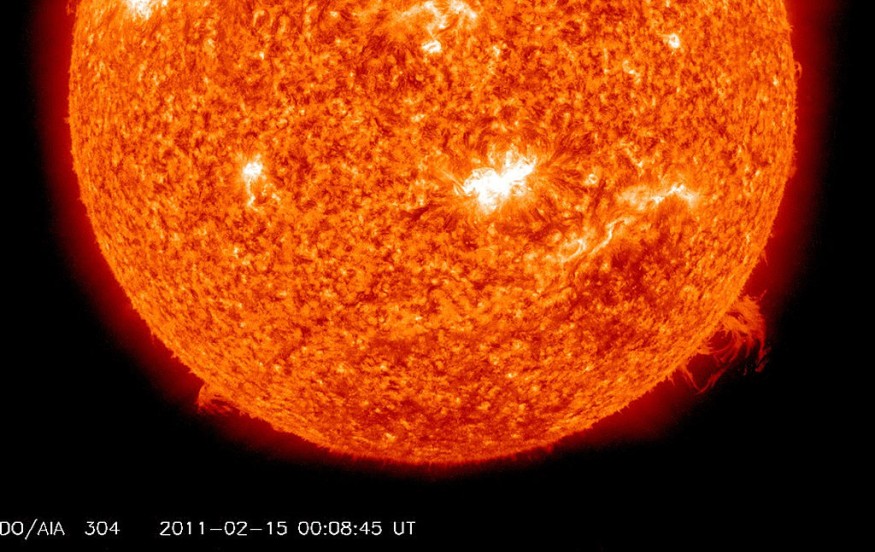Space weather observers are closely monitoring a dark and unstable area on the sun that has grown significantly this week. The sunspot, which doubled in size in a single day, directly faces Earth.
According to Spaceweather.com, the sunspot called AR3038 grew to 2.5 times the size of Earth between Sunday (June 19) and Monday night (June 20), making the sunspot approximately 19,800 miles, or 31,900 kilometers, in diameter.

Latest Solar Cycle, Sunspot Activity
Sunspot activity is anticipated to rise during the solar cycle's active phase. Every 11 years, the sun goes through this cycle, and this year it started the active phase. Since then, sunspots and accompanying solar flares have grown, with the sun producing its most potent outburst in the previous five years in April.
Although numerous flares were observed in May by NASA's Solar Dynamics Observatory (SDO), which monitors solar surface activity, June has witnessed a relative decline. Soon after, sunspot AR3038 drew the scientists' attention.
Dr. Alex C. Young, a helioscientist, tweeted the following last week.
A WEEK OF SUN: The sun has still been mostly quiet from June 10 - 16. Lots of spots but not much activity. Three M flares, one with a nice CME that gave Earth a slight nudge. Wondering when we are going to start seeing the action? 🌞🤔🧐💥🤩 pic.twitter.com/G0D4R92c6s
— Dr. C. Alex Young (@TheSunToday) June 17, 2022
Still, Rob Steenburgh, an acting head at the National Oceanic and Atmospheric Administration's (NOAA) Space Weather Forecast Office, noted per USA Today that AR3038's size and growth rate are just ordinary. He assured the public that there is no reason to panic. In fact, they expected it.
Despite the guarantees, Futurism underscored that solar flares could really harm, especially to orbiting artificial objects. A geomagnetic storm that was brought on by M-class flares in February severely damaged 49 newly launched SpaceX Starlink satellites.
About Sunspot AR3038
The sunspot AR3038 produced a C-class solar flare on June 20 as its size doubled, according to Earthsky. Compared to the outbursts that Interesting Engineering noted around Easter, the recent one was comparatively low intensity. Still, the sunspot's activity hasn't diminished.
Over the following 24 hours, however, its size increased, and the single sunspot could now neatly accommodate three Earths inside of it. Scientists explained that M-class solar flares, which are 10 times more intense than C-class flares, are considered present in the sunspot. Given that the sunspot is facing Earth, a solar flare that results from its activity might send strong solar winds in that direction.
However, the astronomers who also predicted that sunspot AR3038 would explode a few days ago - as Science Times previously reported - haven't seen any of their forecasts come true. The sunspot expanded instead. This further demonstrates how little we actually understand the nature and course of solar surface activity.
The atmosphere of the Earth shields people from solar flares, but astronauts on space missions are not similarly protected. Solar flares can potentially altogether disable radio transmission due to their high-intensity emission. Therefore, scientists must be able to anticipate solar flares with accuracy, which is why missions like NASA's Parker Solar Probe are significant and aid in our understanding of the sun.
RELATED ARTICLE : Solar Storm Warning: Flares Are Heading Towards the Earth, Could It Take Down Communications Lines Worldwide?
Check out more news and information on Space in Science Times.
© 2025 ScienceTimes.com All rights reserved. Do not reproduce without permission. The window to the world of Science Times.












